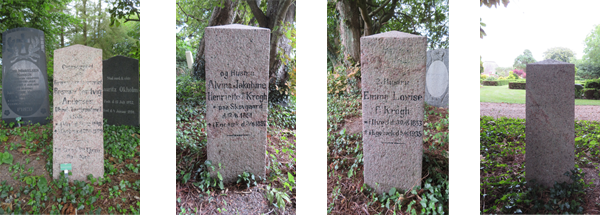The Vedstedgård Havn stock area was situated across from Vester Vedsted at one point in time. From here, Christian V sent 7,000 Danish assistant troops to England in 1689.
The border ran close to Sprækbro south of Fløjdiget from 1864 to 1920, and the graveyard next to Vester Vedsted Kirke, which was built from 1175 - 1200 approximately, has stories to tell of world wars and cross-border conflict.

 The Border Gendarmerie was established in 1866 to patrol the border, and on being pensioned its members often continued to live in the parish. In the graveyard, one can find the tombstones of Quartermaster Christian Lautsen Jepsen (1865-1936), Staff Sergeant Johan Bothmann (1827-1890) and Staff Sergeant Rasmus Hartvig Andersen (1848-1923). In fact, border stone no. 12, which marked the border south of Høm originally, has even been used as a burial memorial for the latter.
The Border Gendarmerie was established in 1866 to patrol the border, and on being pensioned its members often continued to live in the parish. In the graveyard, one can find the tombstones of Quartermaster Christian Lautsen Jepsen (1865-1936), Staff Sergeant Johan Bothmann (1827-1890) and Staff Sergeant Rasmus Hartvig Andersen (1848-1923). In fact, border stone no. 12, which marked the border south of Høm originally, has even been used as a burial memorial for the latter. Sergeant Rasmus Hartvig Andersen's tombstone originally served as boundary stone No. 12 and stood south of Høm. It is unusual for both wives to be mentioned on the same tombstone. Photo: Charlotte Lindhardt.
Sergeant Rasmus Hartvig Andersen's tombstone originally served as boundary stone No. 12 and stood south of Høm. It is unusual for both wives to be mentioned on the same tombstone. Photo: Charlotte Lindhardt.
